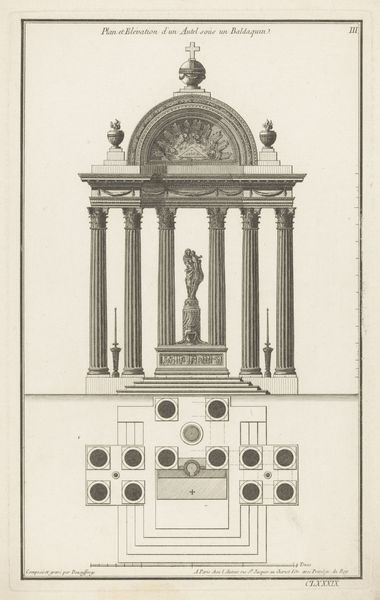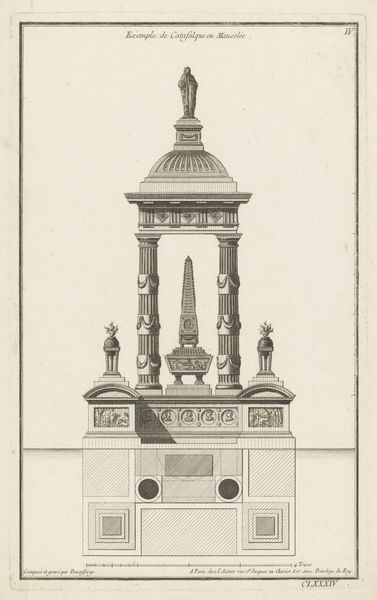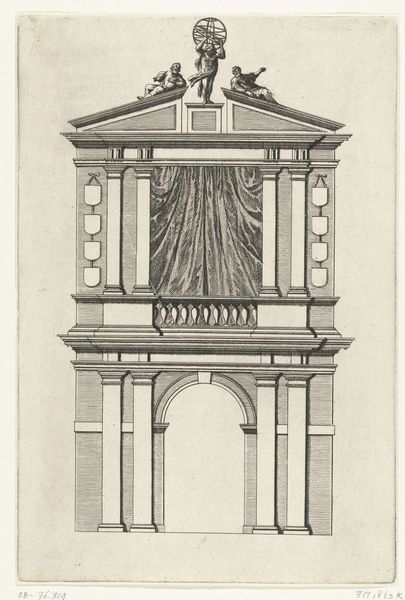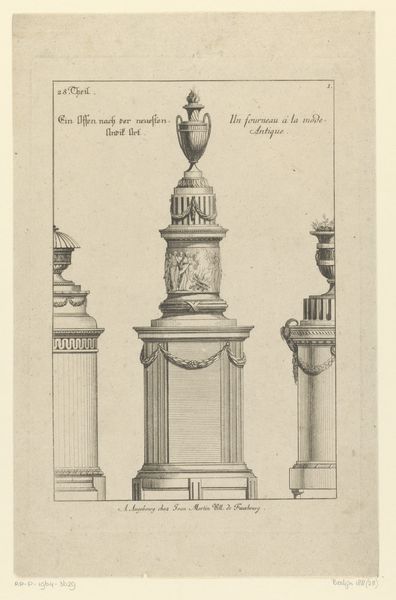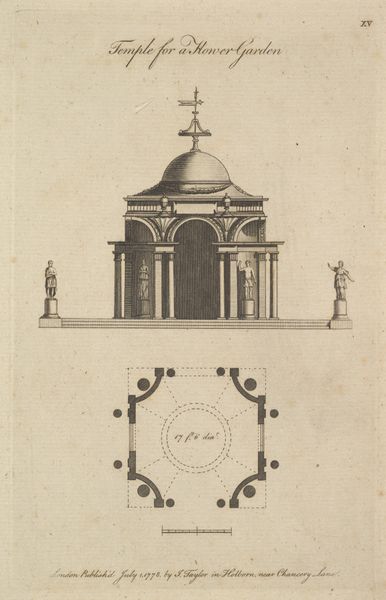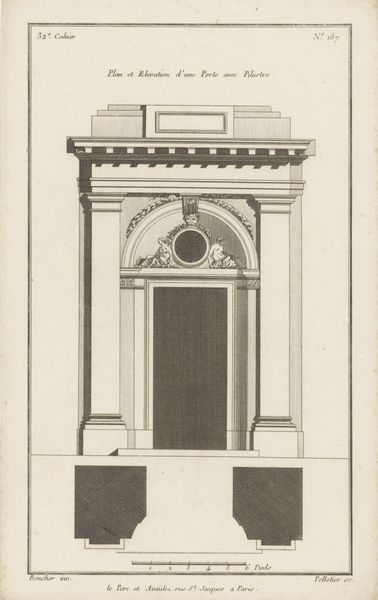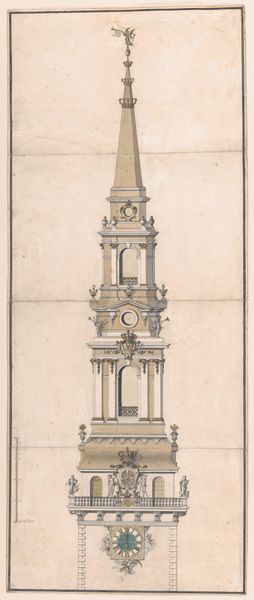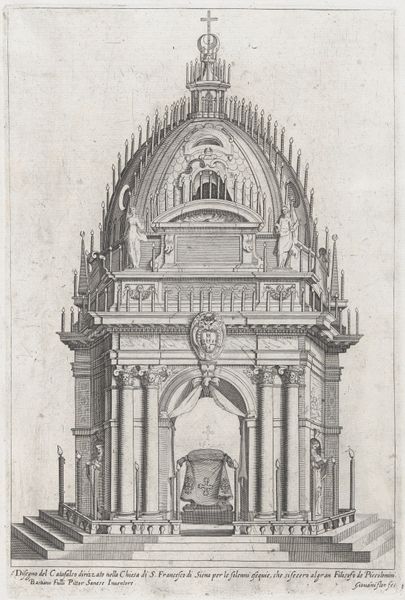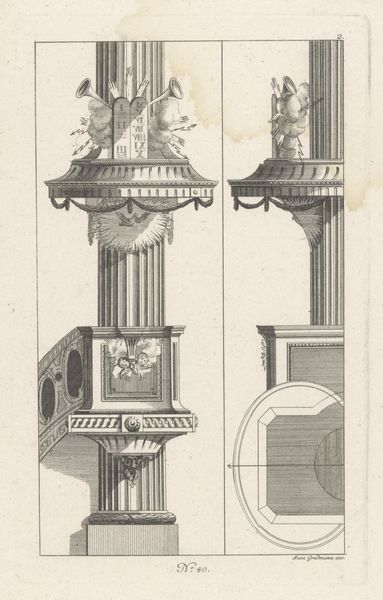
drawing, engraving, architecture
#
drawing
#
neoclacissism
#
geometric
#
engraving
#
architecture
Dimensions: height 365 mm, width 229 mm
Copyright: Rijks Museum: Open Domain
Editor: So, this is Jean François de Neufforge’s "Baldakijn met obelisk", dating from the 1770s. It’s an engraving, very precise and architectural in style. I'm struck by its formality – almost like a stage set. What catches your eye about this image? Curator: Immediately, I see a clear example of Neoclassicism at work, a visual language deliberately evoking ancient Greece and Rome. How might the social context, specifically the patronage of the era, influence its aesthetic and function? Editor: That's interesting... So it's not just about artistic ideals, but who was commissioning these works and for what purpose? Maybe it was commissioned by the church, since a baldachin evokes such settings. Curator: Exactly! Consider how powerful institutions – church or state – used art to project an image of authority. Does this structure seem functional, or is it more about the *idea* of a sacred or important space? The layout also suggests how a large congregation can gather in this place, facing an altar, yet being led and inspired by the architecture itself. What political messages were they sending, through the display of grandeur and symmetry? Editor: I see your point! The perfect symmetry does feel imposing, and those classical details certainly lend a sense of authority. Curator: The very act of creating and displaying such designs reinforced the existing social hierarchies. How would such a structure be received, then, and now, in different socio-political climates? Editor: That’s a great way to look at it. It’s much more than just a pretty drawing. There are intentions to consider, social context, and audience, it tells quite a complex story, doesn’t it? Curator: Precisely. These elements speak to how deeply art is embedded in society. Editor: Well, it gives me a new appreciation to look at art not just for beauty, but for what it meant to people. Thank you.
Comments
No comments
Be the first to comment and join the conversation on the ultimate creative platform.

